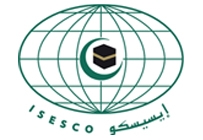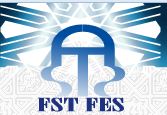Keynote Speakers
We are very pleased to have acquired the services of an excellent selection of keynote speakers for MGEF-13. It is our aspiration that these speakers will give our delegates a view about technological and scientific activities, relating to sustainability in energy and buildings, taking place in various areas of the world.
The speakers and the titles of their talks are shown below.
Note that the list is incomplete at the moment and other speakers will be added over time.
Prof Ali Sayigh
World Renewable Energy Congress/Network (WREC/WREN), UKSolar and Wind Energy will supply 50% of Global Electricity by 2030
More details ...
Dr Mark Barrett
University College London, UKIntegrating buildings into energy systems
More details ...
Dr Jazaer Dawody
Volvo Technology Corporation, SwedenFuel Cell based Auxiliary Power Units (FC-APU) for power generation in trucks with reduced CO2 release and sub-zero pollutant emissions
More details ...
Prof Ahmed Ennaoui
Helmholtz-Zentrum Berlin, Berlin, GermanyThin-film Photovoltaic Technology: The Coming Decade of Opportunity
More details ...
Prof Andrew Geens
Chartered Institute of Building Services Engineers (CIBSE), UKEnergy Efficiency - The new.....Energy Efficiency
More details ...
Rainer Hinrichs-Rahlwes
German Renewable Energy Federation, GermanyRenewable Energy for secure energy supply and climate protections - Experience from Europe and Germany in the global context
More details ...
Prof Ali Sayigh
World Renewable Energy Congress/Network (WREC/WREN), UKSolar and Wind Energy will supply 50% of Global Electricity by 2030
Abstract:
During the last 10 years, the yearly increase in photovoltaic (PV) application was more than 30% . Similarly, the same annual growth for wind energy is achieved. Presently there is more than 74 GW installed PV around the world equivalent to more than 60 nuclear reactors of 1100 MW. As for Wind Energy, there are more than 300 GW power installations globally. Solar thermal applications in heating, cooling, processed heat and desalination are all widely spread. The most effective small system is the evacuated tube collectors. China and Taiwan are covering more than 70% of the global market. Regarding concentrating solar power (CSP), Spain and USA are leading the market. Again more than 200 CSP already built or in the process to be built ranging from few MW to 500 MW. In term of employment and job scenario for example in the USA, renewable energy attributed to 13.5% employment growth compared with 2.4% national growth. The cost of electricity generation is in par with that of oil and gas electricity in most countries in Europe and America.
The paper will demonstration the importance of solar and wind applications in generating electricity and creating employment for green economy in many parts of the world.
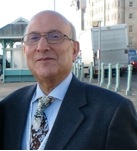
Biography:
British Citizen, Graduated from London University, & Imperial College, BSC.DIC, PhD, C Eng in 1966. Fellow of the Institute of Energy, and Fellow of the Institution of Electrical & Mech. Engineers, called now Institution of Energy and Technology, Chartered Engineer, Chairman of Iraq Energy Institute.
From 1966- 1985, Prof Sayigh taught at Baghdad University, College of Engineering; King Saud University, College of Engineering, Saudi Arabia; fulltime; and also Kuwait University as part time professor. He was Head of Energy Department at Kuwait Institute for Scientific Research (KISR) and Expert in renewable energy at AOPEC, Kuwait from 1981-1985
He started working in solar energy in September 1969. In 1972, he established "The Journal of Engineering Sciences" in Riyadh, Saudi Arabia and in 1984 he established with Pergamon Press his first International Journal for Solar and Wind Technology as an Editor-in-Chief. This has changed name in 1990 to Journal of Renewable Energy. He has been Editor-in-Chief of Renewable Energy incorporating Solar & Wind Technology, published by Elsevier Science Ltd, Oxford, UK. He is editor of several international journal published in Morocco, Iran, Bangladesh, Nigeria and India.
He has been a member of ISES since 1973 and founder and Chairman of the ARAB Section of ISES since 1979. He was chairman of UK Solar Energy Society for 3-years and consultants to many national and international organizations, among them, the British Council, ISESCO, UNESCO, UNDP, ESCWA, & UNIDO.
Since 1977, Prof Sayigh founded and directed several Renewable Energy Conferences and Workshops in International Centre for Theoretical Physics, (ICTP) - Trieste, Italy, Canada, Colombia, Algeria, Kuwait, Bahrain, Malaysia, Zambia, Malawi, India, West Indies, Tunisia, Indonesia, Libya, Taiwan, UAE, Oman, Czech Republic, West Indies, Bahrain, Germany, Australia, Poland, Netherlands, Thailand, Oman, Korea, Iran, Syria, Saudi Arabia, Singapore, China, USA and UK.
In 1990, he established the World Renewable Energy Congress (WREC) and in 1992 the World Renewable Energy Network (WREN) which hold their Congresses every two years, attracting more than 100 countries each time. In 2000 he and others in UAE, Sharjah founded ASTF (Arab Science and Technology Foundation) and Regional WREC Conferences have been held in Sweden, Malaysia, Korea, Indonesia, Australia, UAE, Libya, China to name but a few. Prof Sayigh has been running an annual international seminar on all aspects of renewable energy since 1990, in the UK and abroad. In total there have been 86 seminars.
Prof Sayigh had supervised and graduated more than 34 Ph D, and 64 M Sc students under his supervision at Reading University and University of Hertfordshire when he was Professor 1986-2004.
He edited, contributed, and written more than 32-books, and published more than 500-papers in various international journals and Conferences.
In 2000-2009 initiated and worked closely with Sovereign Publication Company, then in 2010 with Ten Alps Publishing Company, to produce the most popular magazine at annual bases called Renewable Energy which distributed freely to more than 6,000 readers around the world. Presently he is the Editor-in-chief of Comprehensive Renewable Energy coordinating 154 top scientists, engineers and researchers contribution in eight volume published in 2012 by Elsevier Publishing Company, Oxford, UK.
Dr Mark Barrett
University College London, UKIntegrating buildings into energy systems
Abstract:
Providing people with services such as heating, lighting and appliances in buildings engenders a large fraction of national energy consumption in most countries. To improve energy security and control carbon emissions, energy efficiency and renewable energy supply will have to be increased. But many renewable energy sources - such as wind and solar energy - are variable and unpredictable and so technologies such as storage and controls are required to match demand and supply hour by hour.
Using energy models, the talk will describe how the demands for services in buildings vary in time with people's activities and the weather, and the impact of energy efficiency on these demands. The dynamic performance of building energy systems such as heat pumps and solar heating will be described, and how public supplies of heat, gas and electricity can be configured to deliver energy to buildings given renewable inputs such as wind. Given correlations between demands and renewables, the role of storage, dispatchable generation and CHP in matching supply to demand and 'smart' control strategies will be explored.
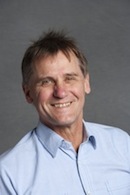
Biography:
Mark Barrett has a degree in Physics and Philosophy and a PhD in energy modelling. He has thirty five years experience modelling and developing policies for energy demand and supply systems, and transport systems so as to meet environmental, economic and energy objectives. He worked on solar energy, heat pumps and ventilation systems at the Building Research Establishment. He has developed overall scenarios of energy and emissions, and the transport (surface and aviation) and electricity sectors in European countries. He is currently working on dynamic energy systems including buildings and heat demand, renewable supply and storage. He has worked at both the international, national and regional level in the UK, Europe and Asia. He has worked for clients including Universities, the European Commission, the European Environment Agency, UK Government departments, the Japan Clean Air Programme, local authorities, private companies and consultancies, and non-governmental environmental organisations. He is now a Senior Lecturer at University College London and a Director of his own company, Sustainable Environment Consultants.
Dr Jazaer Dawody
Volvo Technology Corporation, SwedenFuel Cell based Auxiliary Power Units (FC-APU) for power generation in trucks with reduced CO2 release and sub-zero pollutant emissions
Abstract:
To combat climate change and increase the EU's energy security while strengthening its competitiveness the European Commission has decided to implement the 20-20-20 targets to be met by 2020:
- A reduction in EU greenhouse gas emissions of at least 20% below 1990 levels
- 20% of EU energy consumption to come from renewable resources
- A 20% reduction in primary energy use compared with projected levels, to be achieved by improving energy efficiency.
- NOx: 180 000 tons per year
- PM: 5 000 tons per year
- CO2: 11 million ton per year
By developing a fuel cell based APU for truck application in Europe we can contribute to:
- Decarbonisation of transport
- Ensuring mobility: reliable, safe and secure transport
- Global competitiveness - growth & jobs
The FCGEN project started in November 2011 and will be ended in October 2014. The FC-APU system which is developed within the FCGEN project consists of a low-temperature PEM fuel cell, a diesel fuel processor and necessary balance of plant components which are designed to meet automotive requirements regarding e.g. size, mechanical tolerances, durability etc. High targets are set for energy efficiency and therefore this will significantly lead to emissions reductions and greener transport solutions in line with EU targets.
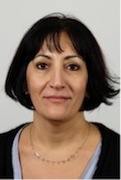
Biography:
Jazaer Dawody has a PhD degree in Materials Science from Chalmers University of Technology and a M.Sc. degree in Physical Chemistry from Gothenburg University. She is currently working at Volvo Technology Corporation in Gothenburg Sweden as project manager for both European and Swedish projects for the development of Fuel Cell-based Auxiliary Power Units s as well as energy efficient low emission exhaust gas aftertreatment systems for mobile applications. Dr. Dawody has also been working at Powercell Sweden as manager for the development of fuel converter systems and as senior researcher at Chalmers University of Technology in Gothenburg Sweden. She has a strong background in catalyst preparation, characterization, deactivation, performance optimization, reaction kinetics and modeling. She is a member of the scientific committee of CAPoC (Catalysis and Automotive Pollution Control) and chair for the Hydrogen and Fuel Cells technical committee of WREC.
Prof Ahmed Ennaoui
Helmholtz-Zentrum Berlin, Berlin, GermanyThin-film Photovoltaic Technology: The Coming Decade of Opportunity
Abstract:
Thin-film PV technology has the advantage using a semiconductor layer a few microns (μm) thick, which is about 100 times thinner than current c-Si cells. Most thin films are based on direct band gap absorbers, which mean they are able to absorb the energy contained in sunlight with a much thinner layer than indirect band gap semiconductors such as traditional c-Si. The most common thin-film semiconductor materials are cadmium telluride (CdTe), amorphous silicon (a-Si). However multinary chalcogenide such as Cu(In,Ga)(SSe)2, CIGS are the most promising materials for PV. They offer opportunities for innovation and creativity with the common goal of cutting production costs for photovoltaic solar energy conversion. Highly absorbing layer is typically deposited on a substrate. Molybdenum coated Glass is a common substrate however thin films can also be deposited on flexible substrates such as metal and polymer, which allows for the potential for flexible lightweight solar modules. CIGS thin films PV are very sensitive to water vapor and therefore research on new encapsulation to maintain performance is required. Another problem related to CIGS is that Indium (In) is a rare element and could run low within the next 10-20 years, while the price is already now increasing rapidly. A new material namely kesterite Cu2(Zn,Sn)(S,Se)4, CZTS have emerged replacing In(III) ion with Zn(II) and Sn(IV). The number of research groups on this material has increased dramatically, after the work of IBM team on CZTS with conversion efficiency exceeding 10% using low cost non-vacuum methods [1]. We believe that the use of non-vacuum methods will open many opportunities to achieve the electricity price parity resulting in large-scale world deployment of PV technologies. Other PV technologies referred to as third-generation PV are being developed. Dye-sensitized solar cells use dye molecules absorbed onto a nanostructured substrate to absorb solar radiation, Organic PV (OPV) solar cells, based on polymers or small molecules with semiconductor properties. Quantum dots with physical properties similar to both bulk semiconductors and discrete molecules have the potential to achieve higher efficiencies through multiple exciton generation. In this paper we describe current status of PV technologies and address a wide range of low cost non vacuum methods including the challenges to the commercialization of solution-processed PV technologies. Particularly we will present our research on low cost fabrication of metal chalcogenide materials such as CIGS and CZTS and devices as well as the characterization of their properties [2,3].
[1] S. Bag, O. Gunawan, T. Gokmen, Y. Zhu, T. K. Todorov and D. B. Mitzi, Energy Environ. Sci., 5 (2012) 7060.
[2] Xianzhong Lin, Jaison Kavalakkatt, Kai Kornhuber, Daniel Abou-Ras, Susan Schorr, Martha Ch. Lux-Steiner and Ahmed Ennaoui, RSC Advances, 2012, 2, 9894-9898
[3] Ahmed Ennaoui Renewable Energy 49 (2013) 68-71

Biography:
Prof. Dr. Ahmed Ennaoui was born and brought up in Morocco. He studied Physics and Chemistry and holds in 1976 his M. Sc. degree in solid state electronics from the University of Bourgogne (France) and then earned a doctorate in solid state electronics in 1979 on solar energy conversion for water splitting using Titanium oxide electrodes. He joined the University Mohamed V, Morocco in 1979 and served as professor of physics. From 1983 to 1987 he worked for his Habilitation degree with Prof. Helmut Tributsch at the Hahn-Meitner-Institute, Berlin/Germany. He obtained in 1987, his Habilitation with the highest honor: summa cum laude for his work entitled "Iron Disulfide, FeS2: Synthesis, (photo) -electrochemistry, physical properties and application for solar energy conversion". Most important results of this habilitation-thesis were published as invited chapter in the journal Solar Energy Materials and Solar Cells, (Volume 29 (1993) Issue 4, Pages 289-370) with the title: Iron disulfide for solar energy conversion. Presently he is working as Senior Scientist and head of a research group in the institute of heterogeneous material systems at "Helmholtz-Zentrum Berlin für Materialien und Energie GmbH", HZB (the former Hahn-Meitner-Institute, HMI). His research covers the processing of new materials, properties and applications in Photovoltaic emerging technologies. He is supervising at HZB both PhD and M. Sc. students as well as postdoctoral associates. He is involved in different grant projects financed by the European commission, the Federal Ministry of Education and Research (Germany). He is executing HZB's strategy exploring the topic: Scaling up Cadmium free buffer layer for production scale Cu-chalcopyrite absorbers provided by different industry partners in collaboration with the competence center "PVcomB - Kompetenzzentrum Dünnschicht- und Nanotechnologie für Photovoltaik Berlin" Meanwhile he is supervising student at "Freie Universität" Berlin on the Renewable Energies Seminar "Lehrseminar Erneuerbare Energien". Since 2009 he work in collaboration with the Research Center for Solar Energy Chemistry at Osaka University, and taught several talks on the topics: Research Opportunities in Cu-chalcopyrite Materials and electroplating of binary and ternary compounds for PV applications. Ahmed Ennaoui is author and co-author of more than 160 scientific papers and 3 patents all of them on innovative materials for solar energy conversion. He published two special issues in the journal Solar Energy Materials and Solar Cells and 4 more other journals. He is also serving as Scientific Advisory Board member for the Moroccan "Institut de Recherche en Energie Solarie et Energies Nouvelles, IRESEN". His research interests are in advanced materials, nanosynthesis, photoelectrochemistry, solid state devices. He is now exploring Cu-Kesterite Cu2ZnSn(S,Se)4 NPs ink, novel fabrication techniques, non-vacuum techniques and novel device concepts for next generation solar cell.
Prof Andrew Geens
Chartered Institute of Building Services Engineers (CIBSE), UKEnergy Efficiency - The new.....Energy Efficiency
Abstract:
The cyclical nature of political interest in the energy performance of buildings in the UK can be traced back to the early 1970s when it was triggered by concerns over security of supplies at a time when oil was an imported commodity. With the development of North Sea oil and gas, security of supply became less of a concern and interest waned. More recently, interest has been driven by concerns over the effect that the burning of fossils fuels might be having on the climate, although it may be no co-incidence that the political will to tackle this problem is evident at a time that the UK, having depleted its reserves of gas and oil in the North Sea is once again a net importer of these fuels.
The implementation of the 2007 Energy Performance of Buildings Directive in the UK (and its re-cast) and other recent energy conservation initiatives such as the Green Deal have resulted in political enthusiasm and support for "new" technology like heat pumps and water turbines. However whilst innovation is being encouraged on the one hand, on the other hand attempts to manage energy better in existing buildings are being shunned. It is against this background that this paper aims to identify what, if anything has been learnt in the last 40 years and what the research community needs to do to avoid another wasted 40 years.

Biography:
Professor Andrew Geens is Head of CIBSE Certification in London and an Associate Academic at Cardiff Metropolitan University where he is supervising a number of PhD projects related to the energy performance of buildings. Andrew was formerly a Principal Lecturer in the Faculty of Advanced Technology at the University of Glamorgan. A Chartered Engineer and Fellow of the Chartered Institution of Building Services Engineers, his particular interests in indoor air quality, energy performance of buildings and low energy design of buildings are reflected in his teaching, research and consultancy activities. Andrew is actively involved in examining, assessing, and training Non-Domestic Energy Assessors and is accredited to produce Certificates himself.
Rainer Hinrichs-Rahlwes
German Renewable Energy Federation, GermanyRenewable Energy for secure energy supply and climate protections - Experience from Europe and Germany in the global context
Abstract:
Based on the experience of some frontrunner and pioneer countries, an increasing number of states and provinces world wide have developed policies for Renewable Energy in all sectors: electricity, heating & cooling and transport. They have set targets and developed specific policies to foster growth of Renewables. Investment in Renewables and significant growth rates can increasingly be observed globally, with the pioneer countries still as strong competitors but with global deployment accelerating quickly. Based on experience in Germany (in particular the success of the feed-in system for the electricity sector) and in the European Union as a whole, with China, India and other developing countries following suite Renewable Energies are bound to become major and increasingly dominant sources of global energy supply. I will discuss challenges and benefits for an ambitious transition towards Renewable Energy in an increasing number of countries - developed and developing, north and south.
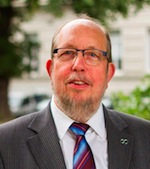
Biography:
Rainer Hinrichs-Rahlwes is the President of EREC, the European Renewable Energy Council, the umbrella organization of European renewable energy industry, trade and research associations. And he is the President of EREC's member Association EREF, the European Renewable Energies Federation, the voice of independent producers of energy from renewable sources.
He is a Board Member of the German Renewable Energy Federation (BEE). He is BEE's Spokesperson European and international affairs, and he is the Chairman of BEE's related working group.
From November 1998 to December 2005, he was a Director General in the German Federal Ministry for the Environment, Nature Conservation and Nuclear Safety (BMU), in charge of - among others - renewable energies and climate protection. He was one of the two chairmen of the International Steering Committee preparing the renewables2004-conference in Bonn. After the conference, he served as BMU's representative and a co-chair and later a member of the Bureau of the Global Policy Network, now known as REN21.



